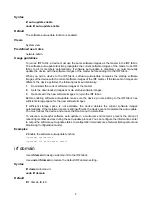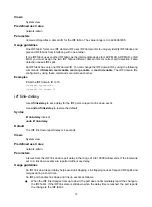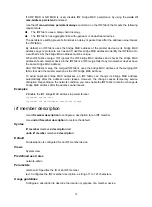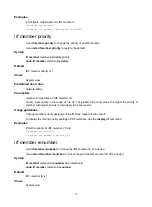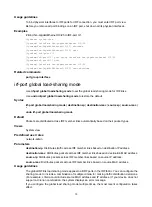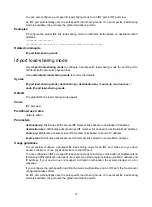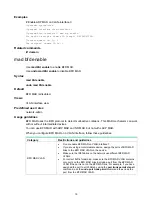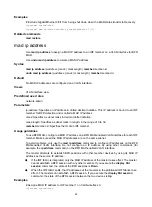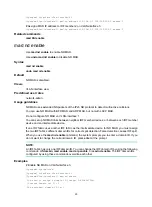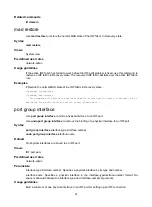
23
[Sysname] interface vlan-interface 3
[Sysname-Vlan-interface3] mad ip address 192.168.0.1 255.255.255.0 member 1
# Assign a MAD IP address to IRF member 2 on VLAN-interface 3.
[Sysname-Vlan-interface3] mad ip address 192.168.0.2 255.255.255.0 member 2
Related commands
mad bfd enable
mad nd enable
Use
mad nd enable
to enable ND MAD.
Use
undo mad nd enable
to disable ND MAD.
Syntax
mad nd enable
undo mad nd enable
Default
ND MAD is disabled.
Views
VLAN interface view
Predefined user roles
network-admin
Usage guidelines
ND MAD uses extended NS packets of the IPv6 ND protocol to detect multi-active collisions.
You can use ND MAD with BFD MAD and ARP MAD, but not with LACP MAD.
Do not configure ND MAD on VLAN-interface 1.
You can set up ND MAD links between neighbor IRF member devices, or between each IRF member
device and an intermediate device.
If one IRF fabric uses another IRF fabric as the intermediate device for ND MAD, you must assign
the two IRF fabrics different domain IDs for correct split detection. False detection causes IRF split.
When you use the
mad nd enable
command, the system prompts you to enter a domain ID. If you
do not want to change the current domain ID, press
enter
at the prompt.
NOTE:
An IRF fabric has only one IRF domain ID. You can change the IRF domain ID by using the following
commands:
irf domain
,
mad enable
,
mad arp enable
, or
mad nd enable
. The IRF domain IDs
configured by using these commands overwrite each other.
Examples
# Enable ND MAD on VLAN-interface 3.
<Sysname> system-view
[Sysname] interface vlan-interface 3
[Sysname-Vlan-interface3] mad nd enable
You need to assign a domain ID (range: 0-4294967295)
[Current domain is: 0]: 1
The assigned domain ID is: 1

